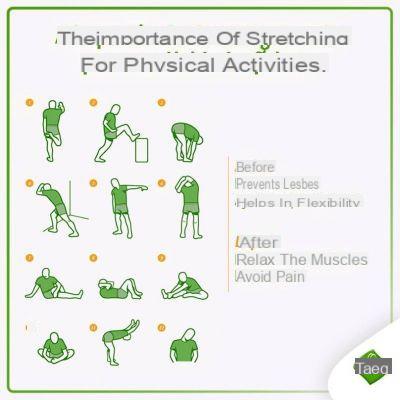
In the gym we are often used to seeing people training hard for one or two hours, 5-6 days a week, with the sole purpose of increasing the overloads to get to the long-awaited muscle hypertrophy.
The stretching of the muscles is practically not considered by these gentlemen who think that stretching, in addition to being useless, is also a waste of time.
Let's try to shed some light on this topic, outlining why muscle lengthening must fully enter into training in the gym, and what benefits it can bring, both from the point of view of flexibility and from the hypertrophic point of view. (yes ... you got it right, stretching is an aid to gain muscle mass).
Here's an example:
if my goal in the gym is to increase the hypertrophy of the pectorals and I start to use as much overload as possible in order to stimulate their growth, but basically I have a retraction of the pectoral or even worse of the anterior internal chain, I will not be able to use the full range of motion. I remember that to have the maximum contraction it is necessary to start from the maximum elongation but, if I have a retraction in that point, obviously my ROM will be limited, as will my muscle development, since the actin and myosin filaments will not be able to stretch and contract in complete and physiological way.
Also, due to this muscle tension, in order to try to use the maximum range of motion anyway, I will compensate with other muscle groups. All this will lead me to perform the exercise incorrectly, also risking hurting myself, for example by creating contractures or injuries due to poor mobility and inappropriate use of overloads.
So it becomes essential to have an elastic and flexible body, which can allow me to perform any exercise using the maximum range of motion granted by the exercise itself, without risking joint problems.
The main types of stretching that can be done are basically divided into: Sectoral stretching and active global stretching.
The first, much better known, is the one that can be seen practically everywhere, in the gym, on the football fields, on the athletics tracks, and consists in keeping the affected muscle area in lengthening for at least 30 seconds; it has the advantage of being simple in execution and practicable anywhere, but it has the disadvantage of not taking into account the muscle chains and not acting on the connective tissue, the real culprit of retractions and pains.
Active global stretching, much less known than the first but much more effective, acts, instead of on the single muscle, at the level of the muscle chains; it is useful precisely because the human body is made up of a whole series of muscle chains that influence each other. This stretching methodology allows, among other things, to eliminate the "compensations" that the body creates when it is stretched. In this way we are able to obtain a true muscular and connective elongation, based on the duration of the exercise, improving flexibility in a real way.
The only negative notes of this type of stretching reside in the duration of the exercise itself (you get to maintain the position even for 10 min) and in the "real" effort in maintaining a certain posture, since, as previously said, to be effective it will have to eliminate all the compensations that the body creates in order not to feel pain. During the stretch it is necessary to learn to breathe correctly, in order for the diaphragm to move in a physiological way.
So the insertion of the muscle stretch becomes fundamental and must be an integral part of a training schedule. My advice is to have an evaluation of the muscle retractions done by a professional personal trainer, and then, initially, work districtally on the muscles that have the greatest stiffness. Then you can perform global stretching, perhaps with the help of "Pancafit", a tool that I use very successfully in my studio and that allows you to stretch the body in a global way.


























